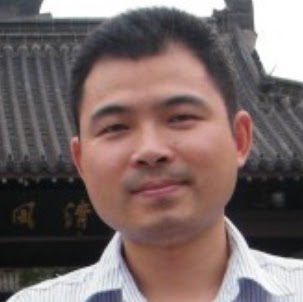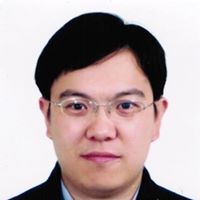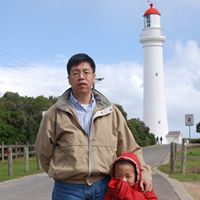Gang Xu
age ~57
from Monterey Park, CA
- Also known as:
-
- Xu Gang
Gang Xu Phones & Addresses
- Monterey Park, CA
- Slc, UT
Resumes

At Gladinet Inc
view sourcePosition:
Testing at Gladinet Inc
Location:
Beijing City, China
Industry:
Information Technology and Services
Work:
Gladinet Inc since Sep 2008
Testing
Alcatel-Lucent Apr 1999 - Aug 2008
MTS
Lucent Technologies 1999 - 2008
MTS
Testing
Alcatel-Lucent Apr 1999 - Aug 2008
MTS
Lucent Technologies 1999 - 2008
MTS
Education:
University of Alabama 1997 - 1999
MS, Computer Science China University of Mining and Technology 1993 - 1996
MS, Power Electronics Xiamen University 1989 - 1993
BS, Computer Science
MS, Computer Science China University of Mining and Technology 1993 - 1996
MS, Power Electronics Xiamen University 1989 - 1993
BS, Computer Science

Senior Surveyor
view sourceIndustry:
Maritime
Work:
Lloyd's Register Group Limited
Senior Surveyor
Lloyd's Register Apr 2009 - Dec 2017
Senior Surveyor In Charge For Wuhan Office
Lloyd's Register Jul 2007 - Feb 2009
Senior Surveyor
Lloyd's Register 2002 - 2007
Project Manager
Lloyd's Register 1997 - 2002
Material Surveyor
Senior Surveyor
Lloyd's Register Apr 2009 - Dec 2017
Senior Surveyor In Charge For Wuhan Office
Lloyd's Register Jul 2007 - Feb 2009
Senior Surveyor
Lloyd's Register 2002 - 2007
Project Manager
Lloyd's Register 1997 - 2002
Material Surveyor
Education:
University of Warwick - Wmg 1996 - 1996
Associates, Business Management, Engineering Xi'an Jiaotong University 1978 - 1982
Bachelors
Associates, Business Management, Engineering Xi'an Jiaotong University 1978 - 1982
Bachelors

Educational Consultant
view sourceIndustry:
Education Management
Work:
Bcepd
Educational Consultant
Educational Consultant

Gang Xu
view source
Gang Xu
view source
Gang Xu
view sourceLocation:
United States
Lawyers & Attorneys

Gang Xu - Lawyer
view sourceLicenses:
New York - Currently registered 1995
Education:
Georgetown Univ Boston U

Gang Xu - Lawyer
view sourceLicenses:
Virginia - Authorized to practice law 1997
Medicine Doctors

Gang Xu
view sourceSpecialties:
Anatomic Pathology & Clinical Pathology
Education:
Peking Union Medical University (1994)
Isbn (Books And Publications)

Epipolar Geometry in Stereo, Motion and Object Recognition: A Unified Approach
view sourceAuthor
Gang Xu
ISBN #
0792341996
Name / Title
Company / Classification
Phones & Addresses
President
BEST CORNER GENERAL TRADING CORP
1209 John Reed Ct STE A, Hacienda Heights, CA 91745
1209 John Reed Ct, Whittier, CA 91748
1209 John Reed Ct, Whittier, CA 91745
1209 John Reed Ct, Whittier, CA 91748
1209 John Reed Ct, Whittier, CA 91745
Principal
G.L.G. Express Inc
Business Services at Non-Commercial Site
Business Services at Non-Commercial Site
72 Deer Crk Rd, Pomona, CA 91766
Principal
Argos Construction Inc
Single-Family House Construction
Single-Family House Construction
2331 S 2 Ave, Arcadia, CA 91006
WESTLAKE ES LLC
President
YONGXIN INTERNATIONAL, INC
17870 Castleton St STE 109, Rowland Heights, CA 91748
17870 Castleton St, Whittier, CA 91748
17870 Castleton St, Whittier, CA 91748
President
DONG YUAN INTERNATIONAL CORPORATION
1977 1979 W Holt Ave, Pomona, CA 91768
Us Patents
-
System And Method For Efficient Computation Of Simulated Thermodynamic Property And Phase Equilibrium Characteristics Using Comprehensive Local Property Models
view source -
US Patent:7676352, Mar 9, 2010
-
Filed:Apr 19, 2005
-
Appl. No.:11/109840
-
Inventors:David J. Van Peursem - Irvine CA, US
Gang Xu - Corona CA, US -
Assignee:Invensys Systems, Inc. - Foxboro MA
-
International Classification:G06F 9/455
-
US Classification:703 9, 703 2, 73 2501, 137828
-
Abstract:A method of estimating a thermophysical property of a fluid using a local model is disclosed herein. The method includes generating, for use within the local model, a series expansion of thermodynamic equations relating to the thermophysical property and one or more derivatives involving the thermophysical property. The method further includes evaluating, based upon a set of specified values of parameters of the fluid, a first order term of the series expansion and a second order term of the series expansion. The values of the first order term and the second order term are then compared. A value of the thermophysical property is then automatically updated when the values of the first order term and the second order term are found to differ by more than a predefined amount.
-
System And Method For Efficient Computation Of Simulated Thermodynamic Property And Phase Equilibrium Characteristics Using Comprehensive Local Property Models
view source -
US Patent:7987082, Jul 26, 2011
-
Filed:Feb 1, 2010
-
Appl. No.:12/698063
-
Inventors:David J. Van Peursem - Irvine CA, US
Gang Xu - Corona CA, US -
Assignee:Invensys Systems, Inc. - Foxboro MA
-
International Classification:G06F 9/455
-
US Classification:703 9, 73 2501
-
Abstract:A method of estimating a thermophysical property of a fluid using a local model is disclosed herein. The method includes generating, for use within the local model, a series expansion of thermodynamic equations relating to the thermophysical property and one or more derivatives involving the thermophysical property. The method further includes evaluating, based upon a set of specified values of parameters of the fluid, a first order term of the series expansion and a second order term of the series expansion. The values of the first order term and the second order term are then compared. A value of the thermophysical property is then automatically updated when the values of the first order term and the second order term are found to differ by more than a predefined amount.
-
Thermodynamic Process Control Based On Pseudo-Density Root For Equation Of State
view source -
US Patent:8165860, Apr 24, 2012
-
Filed:Aug 25, 2009
-
Appl. No.:12/547145
-
Inventors:Gang Xu - Irvine CA, US
David Bluck - Yorba Linda CA, US
David J. Van Peursem - Irvine CA, US
Ian H. Boys - Vista CA, US -
Assignee:Invensys Systems, Inc - Foxboro MA
-
International Classification:G06F 9/455
-
US Classification:703 12
-
Abstract:A system for thermodynamic modeling is provided. The system comprises a computer having a processor, a thermodynamic process simulation application, and a thermodynamic equation of state application. When executed by the processor, the thermodynamic equation of state application determines a density root based on a first and second point of departure from an equation of state and based on a first and a second extrapolation equation. The first departure point satisfies the equation.
-
Thermodynamic Phase Equilibrium Analysis Based On A Reduced Composition Domain
view source -
US Patent:8364316, Jan 29, 2013
-
Filed:Sep 15, 2009
-
Appl. No.:12/560134
-
Inventors:Gang Xu - Irvine CA, US
David Bluck - Yorba Linda CA, US -
Assignee:Invensys Systems, Inc. - Foxboro MA
-
International Classification:G01N 15/06
G01N 33/00
G01N 33/48 -
US Classification:700270, 700 1, 700266, 702 22, 702 30, 702 31, 702127
-
Abstract:A method of modeling phase characteristics of thermodynamic systems utilizing pseudo-properties strategy and a reduced number of variables is disclosed herein. The method describes a means of determining the probability of phase splitting of mixtures of materials at a given temperature, pressure, and composition by characterizing the functions that describe the system via pseudo-properties, and also by describing the system in n−1 or fewer variables, where n represents the number of components in the system of interest. In an embodiment, a multi-component system is characterized in one variable, thereby providing simplified thermodynamic models in a time-efficient manner. In addition, the information generated by this reduced-variable calculation can further be used as a starting point for calculations of equations of state.
-
Super-Linear Approximation Of Dynamic Property Values In A Process Control Environment
view source -
US Patent:20200050158, Feb 13, 2020
-
Filed:Oct 18, 2019
-
Appl. No.:16/657833
-
Inventors:- Lake Forest CA, US
Gang Xu - Irvine CA, US -
International Classification:G05B 17/02
-
Abstract:Simulation of process control environments, including dynamic properties, with a modified first-order Taylor series expansion. By using more linear calculations, a physical dynamic property is approximated in less time and with fewer computing resources. By adjusting the approximation to introduce curvature, a physical dynamic property is represented over a wider range than with basic linear series expansions. A comparison to a basic linear first-order series expansion identifies conditions when a rigorous update of a dynamic property is needed.
-
Super-Linear Approximation Of Dynamic Property Values In A Process Control Environment
view source -
US Patent:20170115644, Apr 27, 2017
-
Filed:Oct 22, 2015
-
Appl. No.:14/919887
-
Inventors:- Foxboro MA, US
Gang Xu - Irvine CA, US -
Assignee:Invensys Systems, Inc. - Foxboro MA
-
International Classification:G05B 17/02
-
Abstract:Simulation of process control environments, including dynamic properties, with a modified first-order Taylor series expansion. By using more linear calculations, a physical dynamic property is approximated in less time and with fewer computing resources. By adjusting the approximation to introduce curvature, a physical dynamic property is represented over a wider range than with basic linear series expansions. A comparison to a basic linear first-order series expansion identifies conditions when a rigorous update of a dynamic property is needed.
Classmates

Gang Xu | Old Dominion Un...
view source
Mayall Street Elementary ...
view sourceGraduates:
Bruce Rosenblum (1961-1966),
Roberta Pierce (1964-1967),
Avis Bulbulyan (1988-1993),
Gang Xu (1990-1993)
Roberta Pierce (1964-1967),
Avis Bulbulyan (1988-1993),
Gang Xu (1990-1993)

A Driving School, Calgary...
view sourceGraduates:
Xu Gang (1996-2000),
Oluseyi Seyi (2002-2006),
Mamasa Coppola (1976-1980),
Talia Starr Derksen (1986-1990)
Oluseyi Seyi (2002-2006),
Mamasa Coppola (1976-1980),
Talia Starr Derksen (1986-1990)
Youtube
Plaxo

Gang xu
view sourceSales Manager at ABB

Gang Xu
view sourceAttorney at Morrison & Foerster LLP

Gang Xu
view sourcePAREXEL International
Googleplus

Gang Xu
Education:
University of South Carolina - International Hospitality and Tourism Management

Gang Xu

Gang Xu

Gang Xu

Gang Xu

Gang Xu

Gang Xu
About:
穷则独善其身,达则兼...

Gang Xu

Gang Xu
view source
Gang Xu
view source
Xu Gang
view source
Gang Xu
view source
Gang Xu
view source
Gang Xu
view source
Gang Xu
view source
Gang Xu
view sourceFlickr
Get Report for Gang Xu from Monterey Park, CA, age ~57













